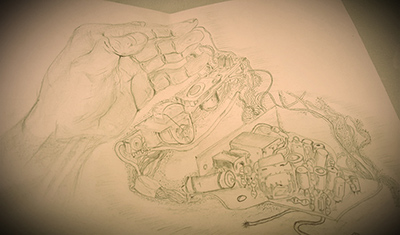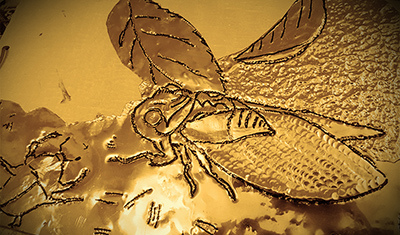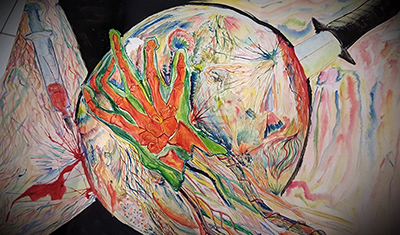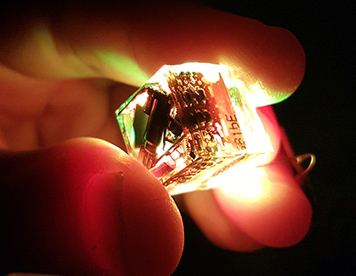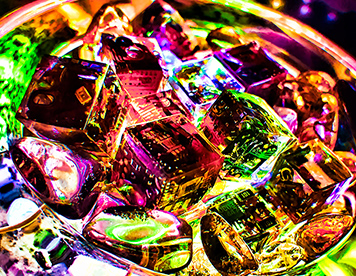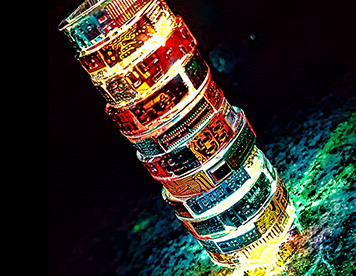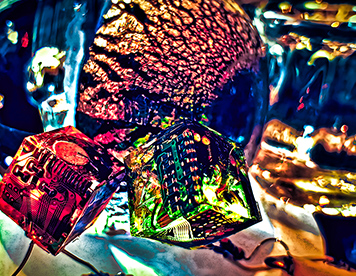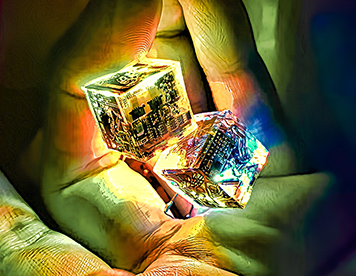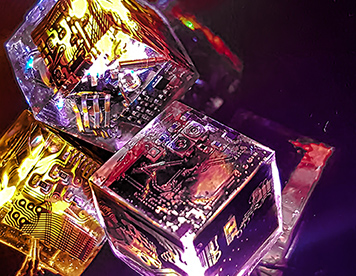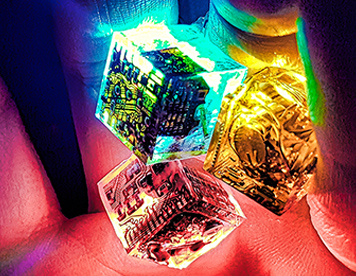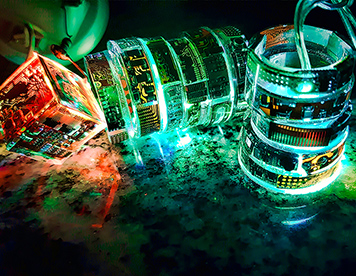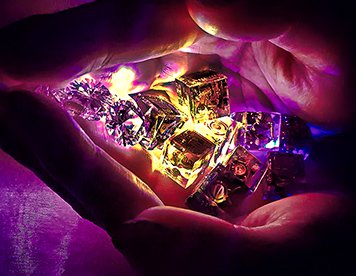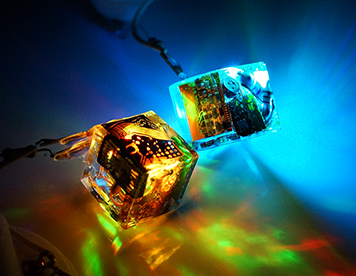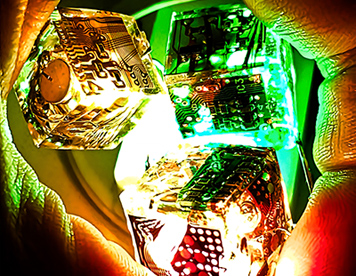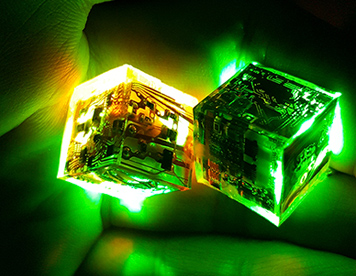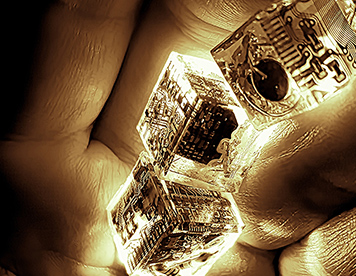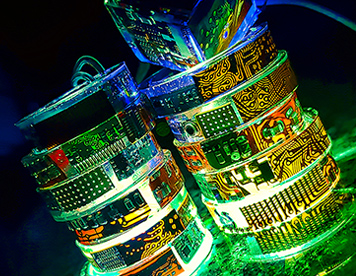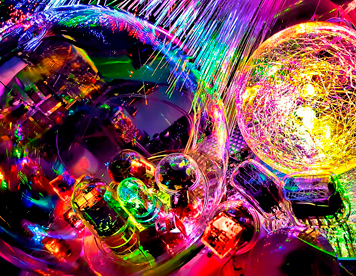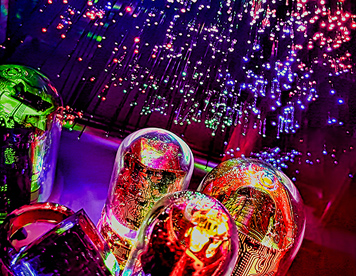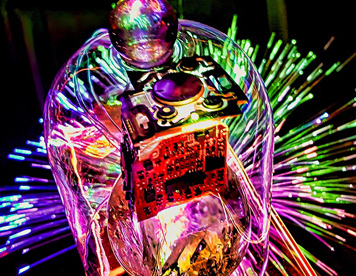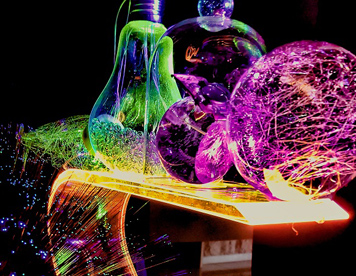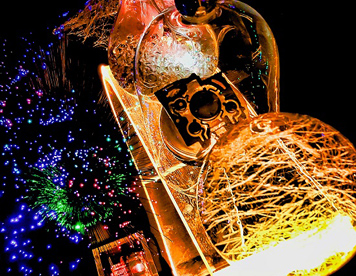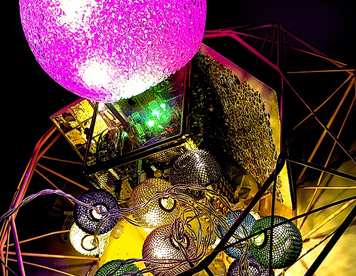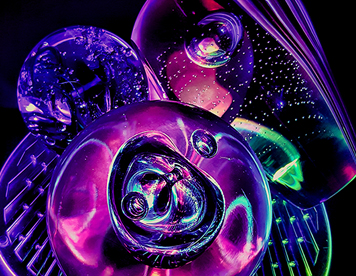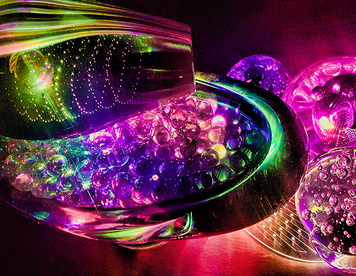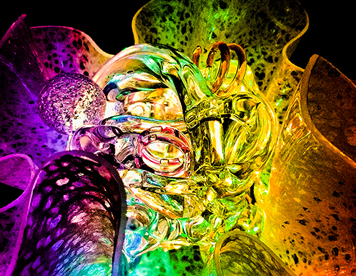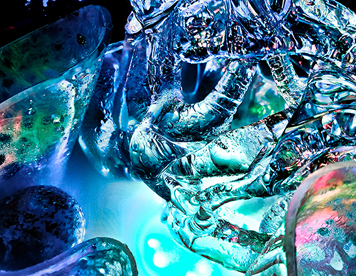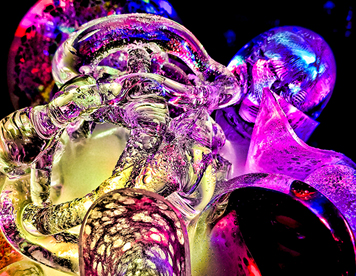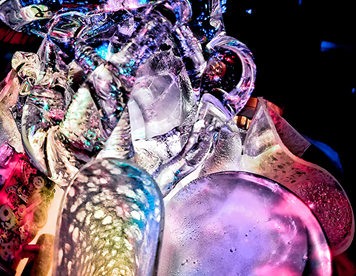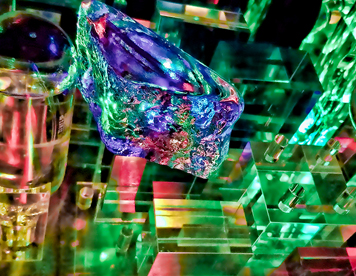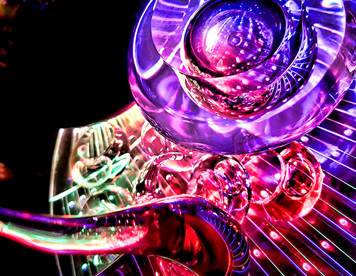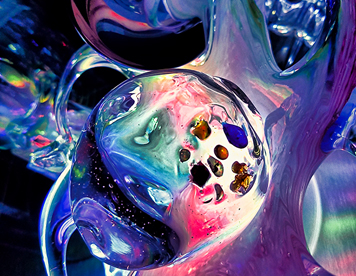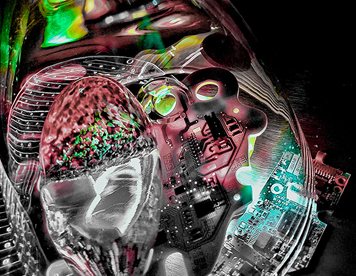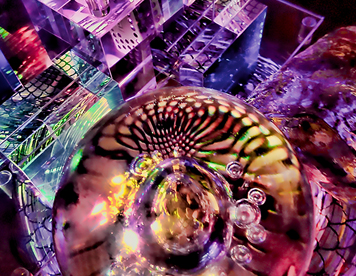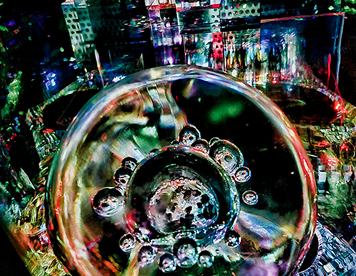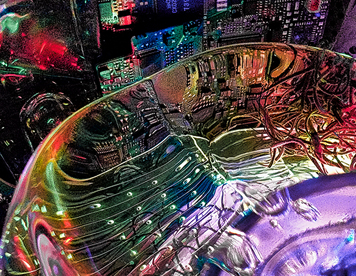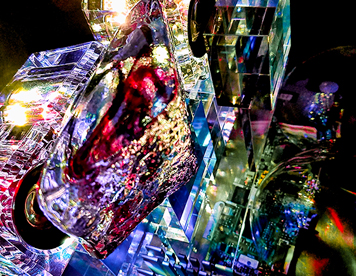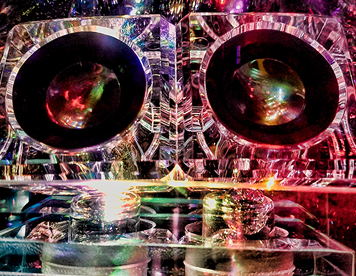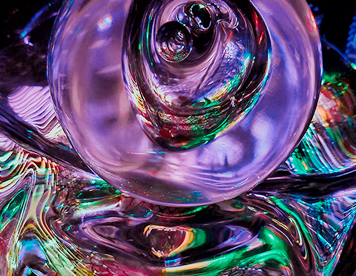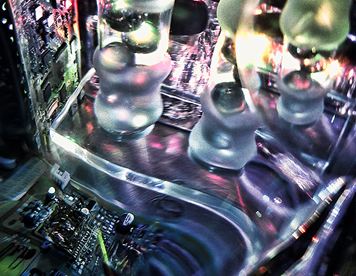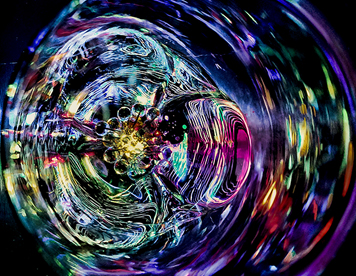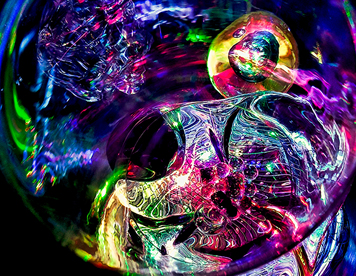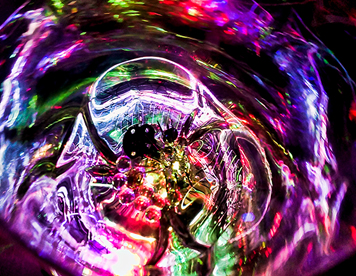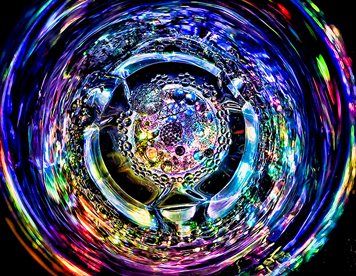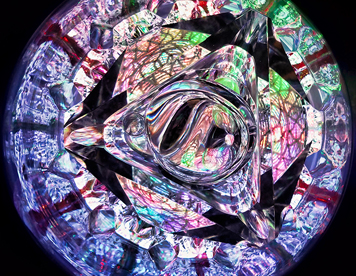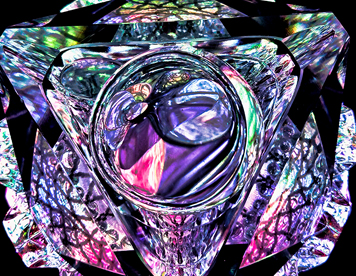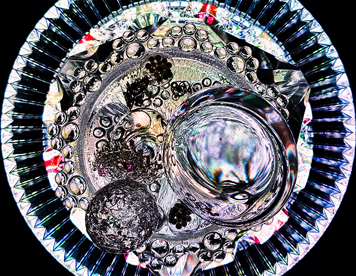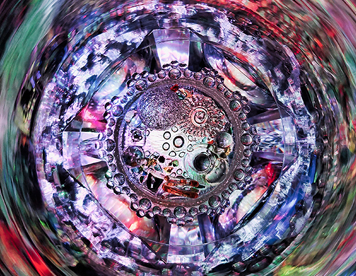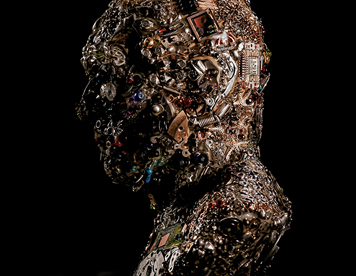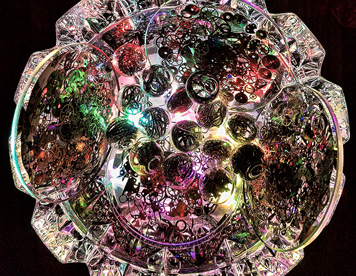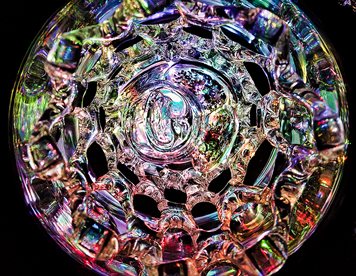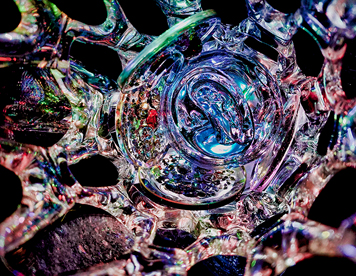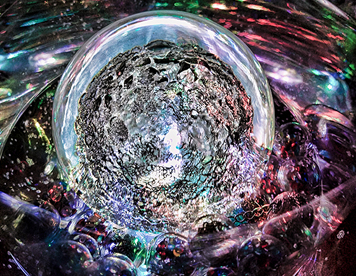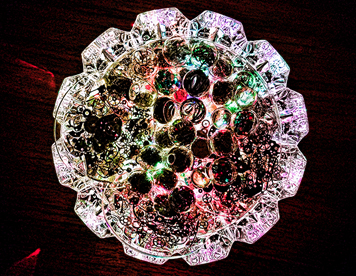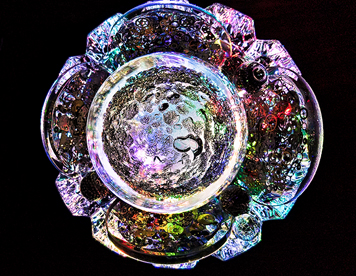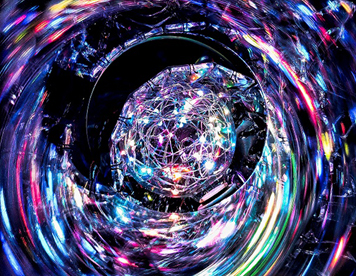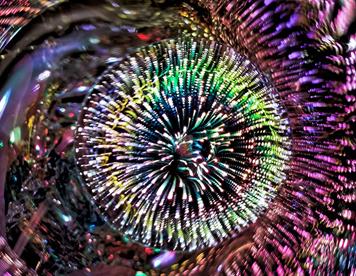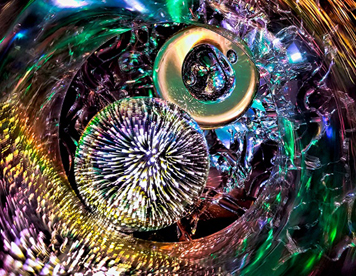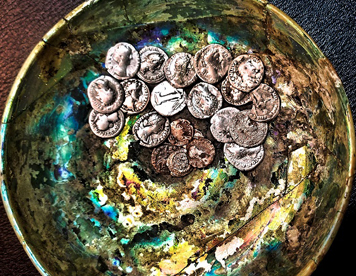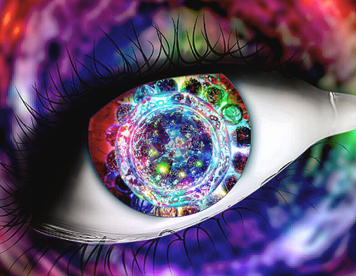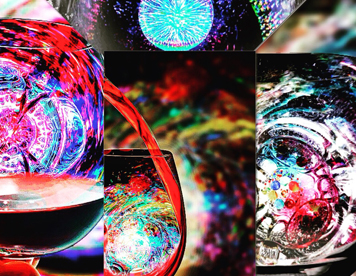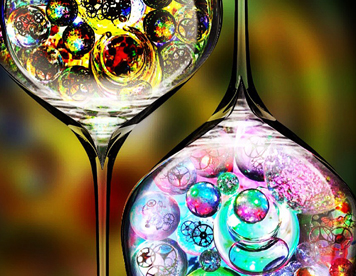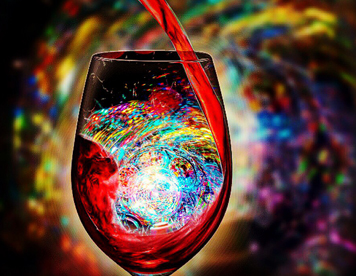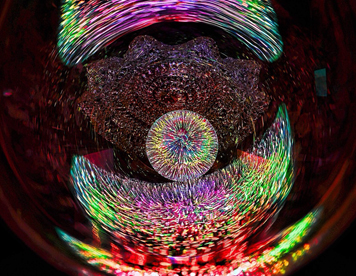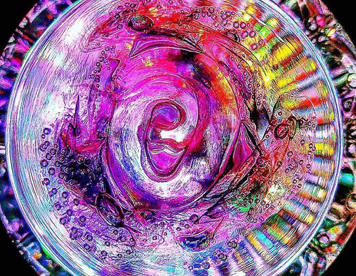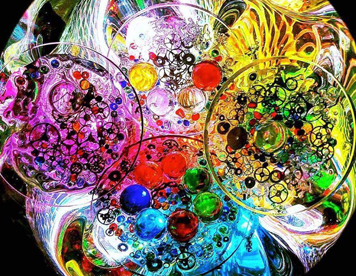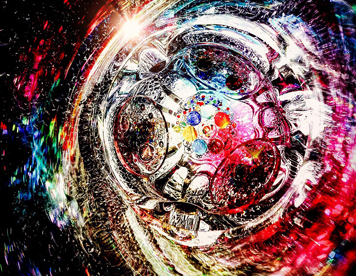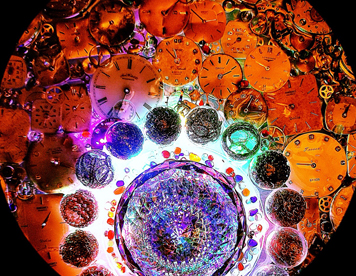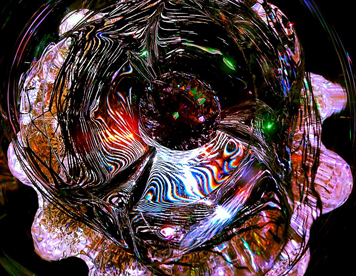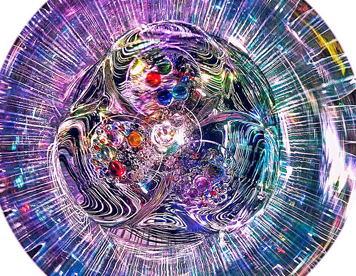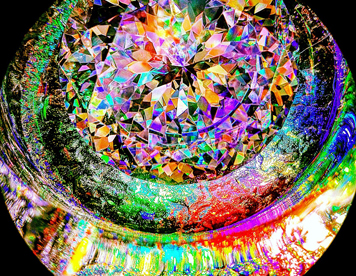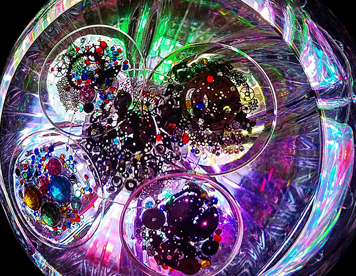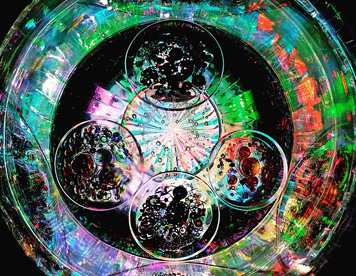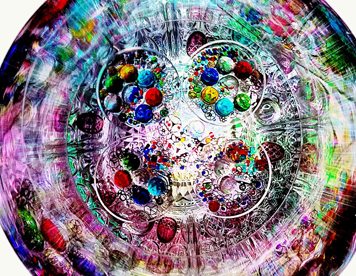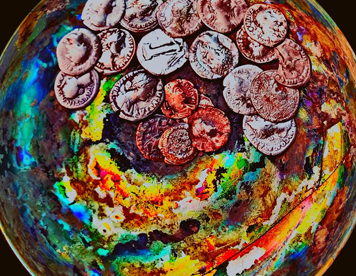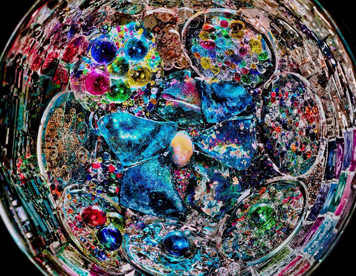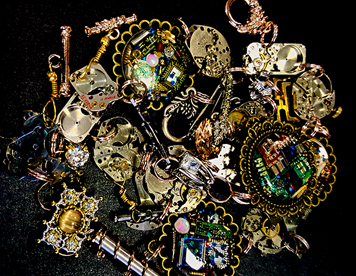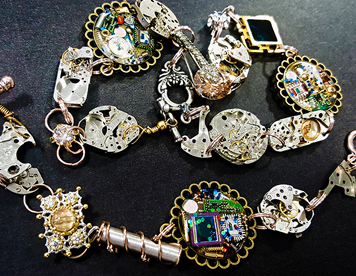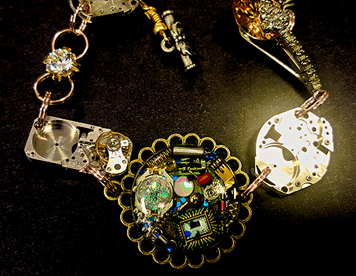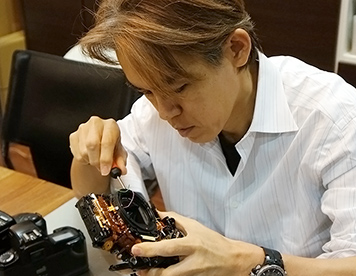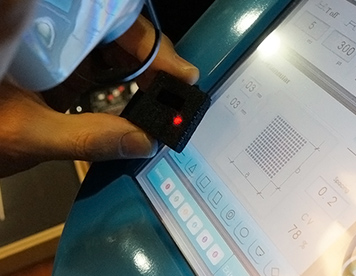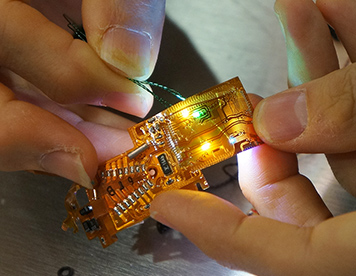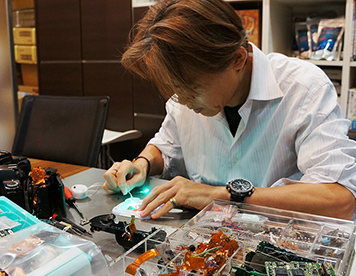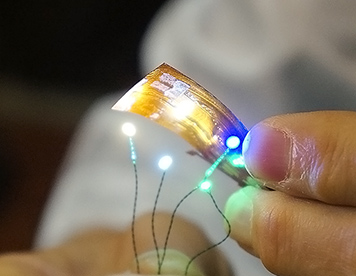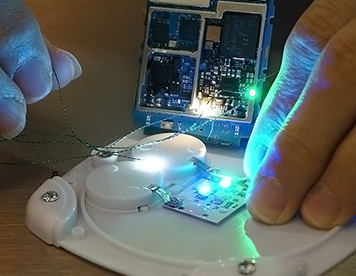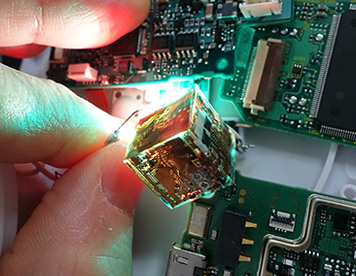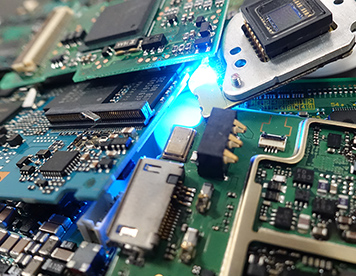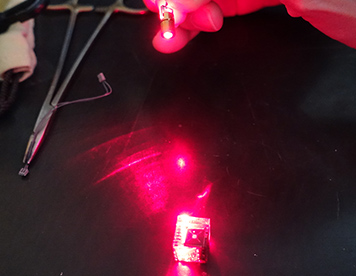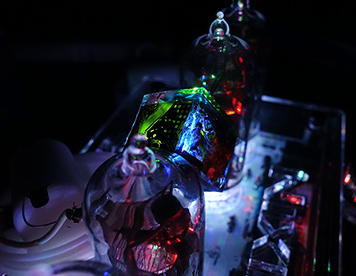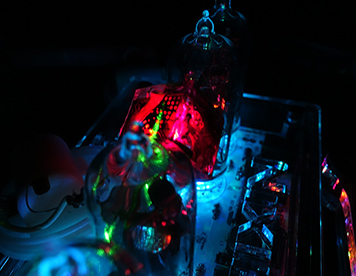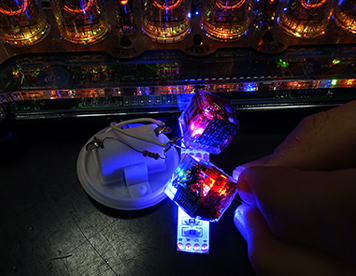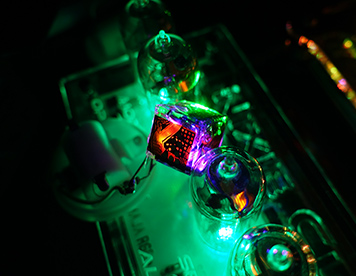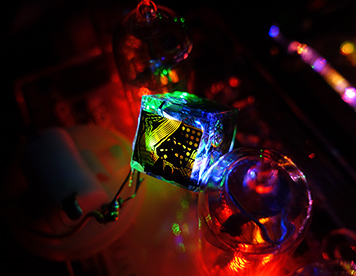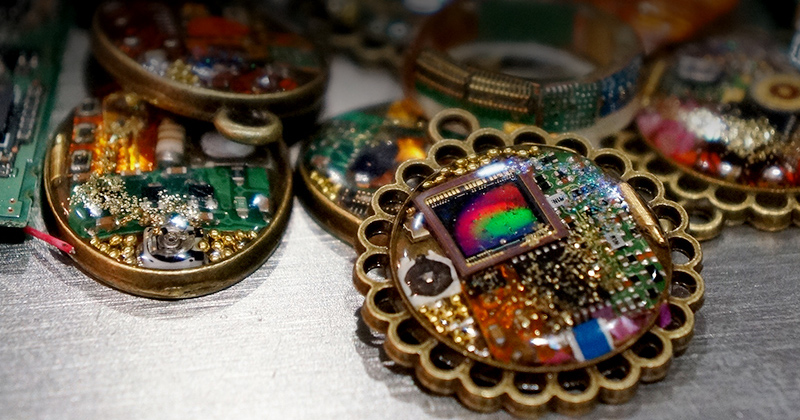Concept
From a very young age, I was very interested in the internal structures of electronics, and whenever I was able to get my hands on used electronics, I would take them apart and observe them.
Radios, TV electronic circuit boards, and other parts of electronic equipment were always goods that healed me, and gave me an interest in human anatomy, biological tissues and organs. Figuring out the structure and way these parts functioned were the spark that led to my interest in the medical field.
In the 21st century, where science has made leaps and bounds of progress,
we've managed to evolve all the way to miniaturizing multi-functioning computers and cellular phones.
The inner structure of these electronics has developed from an era using smoldered circuits to one with electronic circuit boards using refined IC circuits, which in itself is of a shape and structure that we can call science art.
I've recreated outer space in small, transparent objects using circuit boards and electronic parts from old everyday electronics.
Do the arts that Japan is proud for only include traditional ones such as pottery, Japanese paper, or wood sculptures?
Is Japan, despite being known worldwide as a scientific powerhouse, truly making full use of the value of its scientific technology in creating high-quality art?
I believe it is my calling, as a scientist, to answer these questions with my works of art.
My works express outer space and healing, and I hope they become a way to help people worldwide recognize new possibilities.
M.D., Ph.D. Artist Nobuhiro Suetake

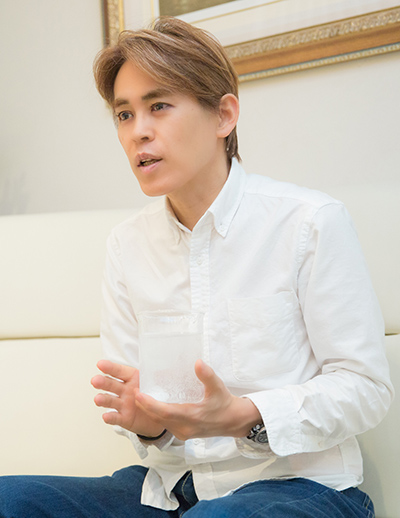
Profile
Nobuhiro Suetake
Born on January 10th, 1962
Gifu City, Gifu Prefecture
Doctor, M.D.
Part-time Lecturer at Juntendo University's School of Medicine
Specialist Certified by the Japan Society of Aesthetic Plastic Surgery
Head Director of Sakae Clinic
March 1981 Graduated from Gifu Senior High School
March 1987 Graduated from Gifu University School of Medicine
May 1987 Entered Gifu University Hospital First Department of Surgery
April 2007 Entered Juntendo University Graduate School of Medicine Doctoral Program
March 2011 Graduated from Juntendo University Graduate School of Medicine
I always paid attention to the themes of science, nature, light, color, the human body, biology, space, Earth, justice, and evil. My art teachers and the people around me misunderstood my grown-up sense, so many of my works from this period of time were disposed of. For over 40 years as a researcher learning medicine and science, I had always admired working as an artist and was able to start making works by using the cutting-edge medical systems, knowledge, and technology of medicine and science that I'd accumulated throughout my life.
From a young age, with my strong interest in manga, art, and electronics, I had dreamed of becoming an artist myself. I especially admiried Shotaro Ishinomori's Cyborg 009, moved by the possibility of machines and humans fused into the human androids seen in his work. Utilizing my knowledge of modeling technology of organisms living in the micro-world as a plastic surgeon, and also my engineering know-how as a scientist, I created works of art that nobody has ever tried before, artistic fusions of electrical circuit boards, electronic parts, and light.
